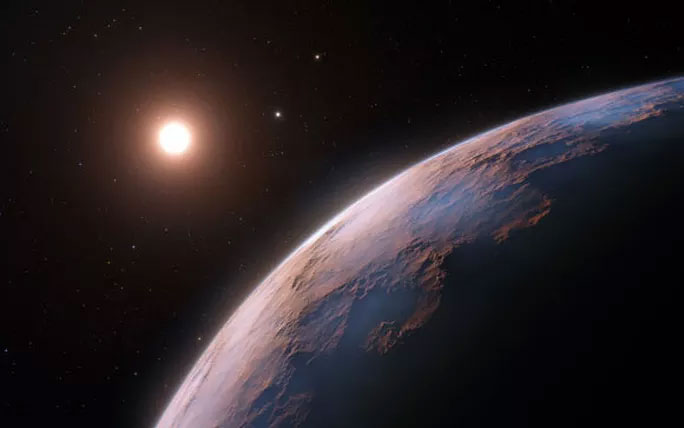The nearest star system to us, Proxima Centauri, continues to reveal a mysterious third planet, with intriguing details that rival those of Proxima Centauri b, which has been carefully studied by astronomers for many years.
According to Sci-News, this will be one of the smallest exoplanets ever recorded. The world, named Proxima Centauri d, is located in the red dwarf star system Proxima Centauri, just 4.2 light years away from us.

Graphic representation of the newly discovered planet – (Image: ESO)
Proxima Centauri d is also the brightest exoplanet ever observed, sparkling like a cosmic diamond and nearly overshadowed by the light of its parent star, as it orbits extremely close to it (just 4 million km away, 1/10 the distance from the Sun to Mercury), completing one orbit in only 5 days.
This is a rocky planet with a mass of only about 1/4 that of Earth, meaning it is extremely small.
Typically, planets that are too small and too close to their parent stars are difficult to observe due to the overwhelming light from the star, but Proxima Centauri d is an exception because it is so close to us that it is easier to observe.
The Daily Mail quotes researcher João Faria from the Institute of Astrophysics and Space Science in Portugal, the lead author of the study, stating that the new planet was confirmed in 2020 when scientists observed this red dwarf star system using a new spectroscopic tool called ESPRESSO, mounted on the Very Large Telescope located in Chile, operated by the European Southern Observatory (ESO).
Prior to this, the system was famous for Proxima Centauri b, which was identified in 2016. Proxima Centauri b is classified as an “Earth-sized” planet, orbiting in a “locked” orbit with its parent star, meaning it always faces the star with one side, similar to how the Moon is locked by Earth.
However, it still lies within the habitable zone, and numerous studies around the world have indicated factors that suggest Proxima Centauri b could support life, even potentially harboring a civilization. Scientists are hopeful that the recently launched James Webb Space Telescope will help confirm the existence of life on this planet.


















































